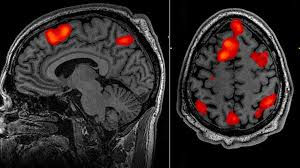Reflexology & fMRI: Scientific Proof That Touch Sparks Whole-Body Activation
- Jessica Serre

- Jul 21
- 3 min read

For decades, reflexologists have observed profound shifts in clients—from reduced pain and stress to improved digestion and emotional balance. Now, thanks to functional magnetic resonance imaging (fMRI), science is catching up and confirming what practitioners have long known: reflexology activates the body in measurable, meaningful ways.
🔬 What Is fMRI & Why Does It Matter?
Functional Magnetic Resonance Imaging (fMRI) is a cutting-edge imaging technique that tracks changes in blood flow and oxygen levels in the brain. It allows researchers to see which areas of the brain "light up" in response to specific stimuli—like pressure applied to reflex points on the feet.
This technology has opened a new frontier in reflexology research, offering visual proof of the therapy’s impact on both physical and neurological function.
🦶 Reflexology Sparks Brain Activation Beyond the Feet
Recent studies have shown that reflexology doesn’t just stimulate the sensory-motor cortex (the area of the brain linked to foot sensation)—it activates deeper regions tied to emotion, memory, and autonomic regulation:
Insula Cortex: Known as the "seat of consciousness," this region regulates emotional states and internal body awareness.
Supramarginal Gyrus: Plays a role in sensory integration and the body-mind connection.
Middle Temporal Gyrus: Involved in memory, language, and emotional processing—especially relevant in stroke recovery and neurodegenerative conditions.
In one study, researchers described the brain as lighting up “like a Christmas tree” during reflexology sessions—a poetic way to describe the widespread and consistent activation observed across participants.
🧪 Proof of Concept: Reflexology’s Impact Is Real
A groundbreaking pilot study led by Dr. Stefan Posse at the University of Minnesota School of Medicine used fMRI to scan the brains of both healthy individuals and stroke patients during reflexology treatments (2). The results were described as “unexpected” and “noteworthy,” with activation patterns extending far beyond the foot-related brain regions.
Even more compelling, the findings were consistent across participants, reinforcing the validity of reflexology’s systemic effects.
🧍♀️ Reflexology & Somatotopy: Mapping the Body in the Brain
Another study from Tohoku University in Japan explored how stimulating reflex areas for the eye, shoulder, and small intestine activated corresponding regions in the somatosensory cortex—the brain’s internal map of the body. This supports the reflexology principle that specific points on the feet mirror internal organs and systems.
🧘♀️ Beyond Relaxation: Reflexology as a Neurological Modulator
These studies suggest reflexology may do more than relax muscles—it may help regulate:
Pain perception
Emotional balance
Autonomic nervous system function
Cognitive processing
In fact, comparisons between reflexology and acupuncture show similar brain activation patterns, especially in the insula, which governs emotional and visceral responses.
🌍 A New Era for Reflexology
With over 80,000 brain scans analyzed and more studies underway, reflexology is stepping into the spotlight as a credible, evidence-based therapy. Researchers and practitioners alike are excited by the implications: reflexology may support recovery from stroke, improve mental health, and enhance overall body regulation.
As one researcher put it, “This study is not only going to change the way we view reflexology—it’s going to change the way we view how the human body operates”.
🦶 Want to experience the science-backed benefits of reflexology for yourself?
Book a session at Serenite Wellness and discover how healing begins from the ground up.
References:





Comments